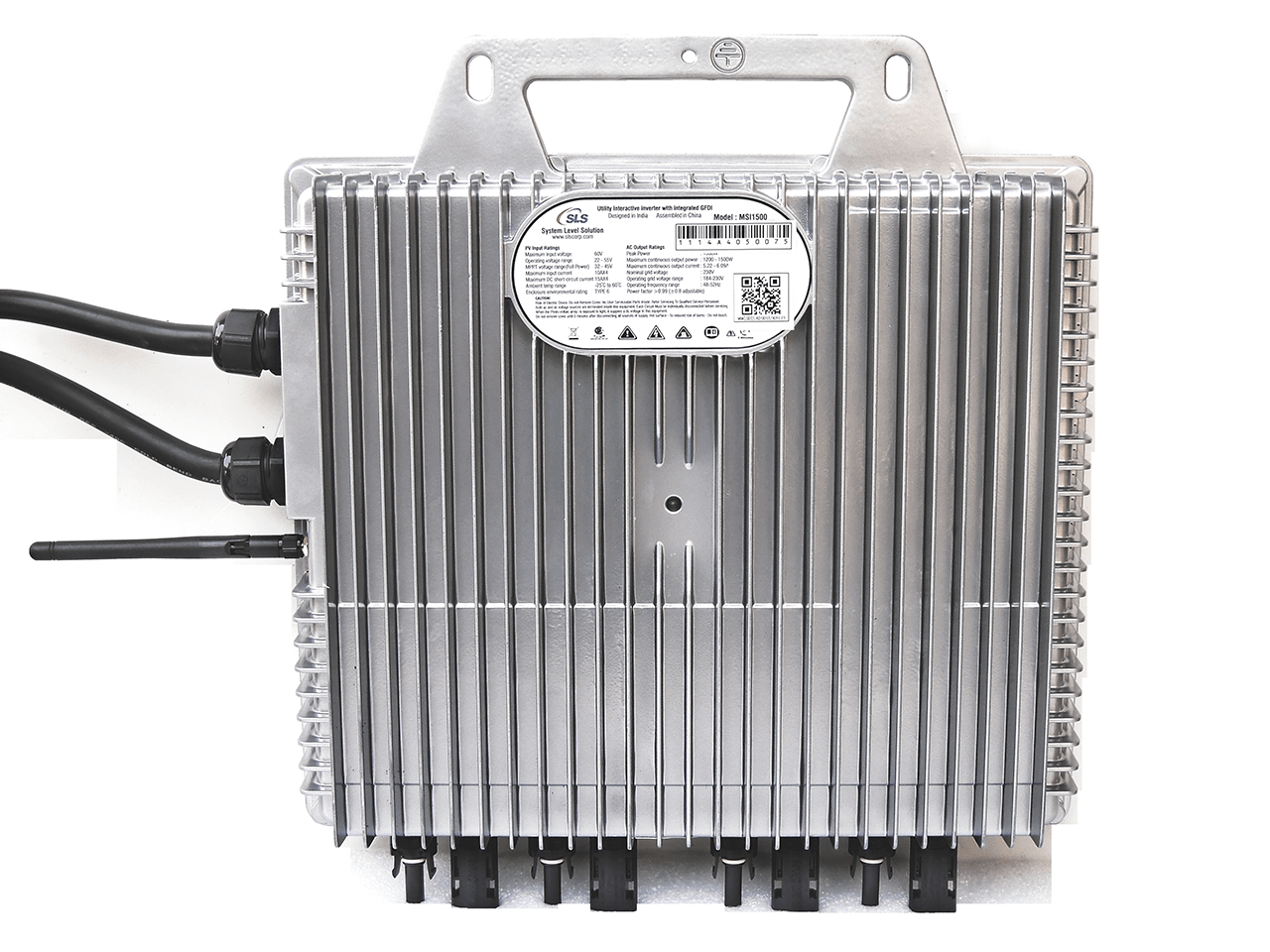In recent years, one of the most heated debates in the energy sector has been between “String-inverters” and “Micro-inverters.” More than half of all solar installations in North America use the latter. Micro-inverters have numerous advantages over general inverters as they are more commonly known. Though they are more expensive, the extra money spent is well worth it.
What is a Micro-inverters?
A Micro-inverter is a small inverter attached to each solar panel individually. Micro-inverters are different from the traditional type of inverters, which are generally located on a wall. These inverters are at some distance from the solar panel strings and are connected with the help of DC cables, and DC power from the panel strings is converted into AC and supplied to the inverter.
Micro-inverters are generally attached to each solar panel that works independently, and the rest of the panels convert DC to AC on the roof. Some solar panels are also available with factory-installed Micro-inverters and are referred to as the AC Solar Modules.
An overview of the advantages of Micro-inverters
Micro-inverters can improve the performance of systems as they trigger all the panels and make them work at their maximum speed. An added advantage of Micro-inverters is locating the different panels on various sections of roof layouts with varying angles of tilt and orientations. Micro-inverters aren’t restricted to panel placement in a particular direction.
Micro-inverters also don’t have a single point of failure, which is essential in large systems with so many panels. Unlike string inverter systems, even if one panel has an issue or fault, the rest of the system can still operate smoothly, with no loss in the generation of power.
Further advantages
-
The basis of Micro-inverters lies in the fact that you can yield a higher rate of solar electricity, theoretically speaking. This is because of the slight differences between the solar panels. When these solar panels are in a traditional inverter, the voltage becomes reduced to that of the lowest voltage panel on the entire system.
-
If a solar system faces many different angles, wherein some panels face east, south or west, then Micro-inverters are the best option for you. Even if you face shading issues from greenery or other installations such as chimneys, microinverters are your best option. Solar panels produce vast amounts of electricity at various points of the day, and Micro-inverters ensure you harvest all of that energy. A standard inverter might end up causing a loss of production.
-
Standard inverters are best used when the solar panels all face a single direction or you have marginal issues with shading. However, it might be hard to find the ideal conditions and harvest all the energy, so Micro-inverters are the way to go. Installing a different optimizer to standard inverters might do the trick, but they require higher investment. These optimizers work similarly to Micro-inverters but need that extra investment while installing.
-
There are a few others that need to be considered as well. Most Micro-inverters have 25-year warranties, while the standard inverters have only anywhere between 5 to 10 years. Micro-inverters reliability was a big question many years ago. Still, technology has caught up to provide more extended warranties on these inverters and showcase the confidence manufacturers have in Micro-inverters and their related products. With the standard system, you can only track the production of the whole system, but Micro-inverters offer an additional boost in system monitoring as well. You can follow the output of each panel and gauge the various parameters from the readings you get.
-
Micro-inverters are small in size and can fit behind a solar panel. This means you don’t need a separate cooling system acting as the central inverters, leading to a lesser loss in the form of heat. These solar panels also don’t affect the solar output generated from the different committees, while Central inverters can bring the entire generation to a halt if one fails.
-
Micro-inverters can be remotely managed, as the output from the solar panel is monitored with the help of a communication bus, thus isolating problems faster than other inverters. The result is converted from DC to AC behind the board; an extra cable is required to carry the current. This cable, however, can be of a lower diameter, with the solar system easily expandable from single to multiple panels that are independent of one another.
-
Micro-inverters are also the ideal option as they can be easily installed due to their relatively smaller size. It is suitable for any residential building, and each panel can be oriented differently, as mentioned before.
Micro-inverters are a simple resource that can be added once at a time if you’re expanding for the future. It’s best to make that investment to avoid issues a few years down the line.
Standard inverters require additional investment to add any other entire unit. These Micro-inverters are a definite spike in value and are recommended if you have different panels that face multiple orientations.
Choose a Micro-inverters of excellent quality to ensure you don’t have to fix or repair the same. These inverters are a great way to securely save your money and the environment.

